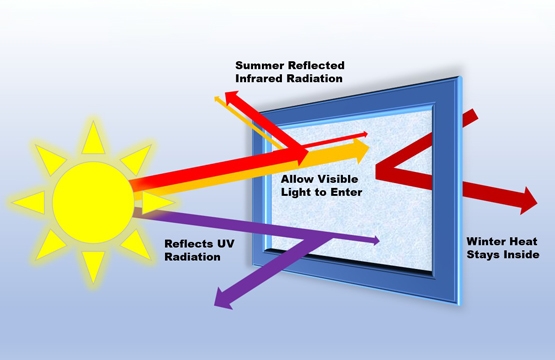
Low “E” or “Emissivity” windows are becoming a norm for new construction homes and a high percentage of replacement window purchases. The increasing popularity of these windows comes as no surprise. They are very energy efficient, reflecting electromagnetic infrared radiation from within or from the outside of the insulated enclosure of the structure. They also minimize harmful UV that can fade and degrade the fabric of draperies and furniture. The low E is a result of coating the surface of exterior panes with a microscopically thin layer of aluminum, so thin, that it is visually transparent. Some of these windows exhibit the low emissive and high reflective properties of aluminum. These windows can be a great energy saving investment, but they are not without some potential problems.
Because of the high reflectance, IR radiation reflects off the window surface at angles in proportion to the angle of the sun. Given the time of day and the time of year, the angle of the sun’s reflectance could cause the surface that it is deflected towards to heat up. In particular, vinyl siding on adjacent buildings may be heated to the point of distorting the siding. This distortion occurs at approximately 160 degrees. Once this distortion occurs the siding is ruined. Screens over the exterior of windows will help diffuse the reflection, but the reflection can still cause damage.
When conducting building inspections, check the surface temperatures of the adjacent buildings that are experiencing reflectance from low E windows. Factor in the time of day and season and warn the client of the possible effects of reflected IR radiation from their windows. When in areas of new construction, make contractors aware of this possibility so that the positioning of houses can be such that reflectance is minimized. The careful placement of landscaping shrubs, plants, and trees can block reflectance and help prevent siding damage.